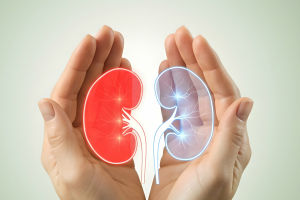Bile Acid Malabsorption
Bile Acid Malabsorption (BAM) is a condition that affects the body's ability to properly absorb bile acids, which play a crucial role in digesting.
While BAM is often overlooked in discussions about digestive disorders, it can have significant impacts on health, particularly in relation to gastrointestinal symptoms and digestion.
What is Bile Acid Malabsorption?
Bile acids are essential for the digestion and absorption in the small intestine. Under normal circumstances, bile acids are produced by the liver and stored in the gallbladder, then released into the intestine to break down dietary fats. Once their role in digestion is complete, most bile acids are reabsorbed in the ileum (the last part of the small intestine) and transported back to the liver to be recycled.
However, in BAM, this process is disrupted, leading to insufficient absorption of bile acids, which can result in various digestive issues.
As Dr. Julian Walters, a leading expert in this condition, explains: "When bile acids aren't absorbed properly, they reach the colon and cause diarrhea, bloating, and other symptoms that can mimic other GI disorders."
Causes of Bile Acid Malabsorption
Ileal Disease or Surgery: Any condition that damages the ileum, such as Crohn's disease or ileal resection surgery, can lead to BAM. When part of the ileum is removed or damaged, bile acids are less efficiently reabsorbed.
Genetic Factors: Some individuals have inherited mutations that affect bile acid transporters in the ileum. These genetic factors can predispose them to BAM even without an obvious cause like surgery or disease.
Cholestasis: This refers to a condition where bile flow is reduced or blocked, often leading to an accumulation of bile acids in the bloodstream. This condition can disrupt the normal recycling of bile acids, contributing to BAM.
Medications: Certain drugs, such as those used to lower cholesterol, can interfere with bile acid reabsorption and lead to BAM. Drugs like cholestyramine and colesevelam are known to affect bile acid transport.
Symptoms of Bile Acid Malabsorption
Chronic Diarrhea: One of the hallmark symptoms of BAM is watery, frequent diarrhea, especially after eating fatty foods.
Abdominal Pain: Many individuals with BAM experience cramping, bloating, and discomfort in the abdominal area.
Unexplained Weight Loss: Because the body is unable to absorb properly, people with BAM may experience weight loss, despite eating normal amounts of food.
Steatorrhea: This refers to the presence of excess in the stool, which appears greasy and foul-smelling. It is a direct result of the body’s inability to digest and absorb.
Diagnosis of Bile Acid Malabsorption
SeHCAT Test (75-Seleno-Homocholic Acid Taurine Test): This is a highly accurate test used to measure bile acid retention. It involves administering a radioactive compound and monitoring its excretion to assess bile acid absorption. Low retention indicates BAM.
Blood Tests: Elevated levels of bile acids in the blood can confirm a diagnosis of BAM, as it indicates the inability of the intestines to properly reabsorb bile acids.
Treatment Options for Bile Acid Malabsorption
Bile Acid Sequestrants: Medications like cholestyramine, colestipol, and colesevelam are commonly prescribed to bind excess bile acids and prevent them from irritating the intestines. These drugs help reduce diarrhea and other symptoms of BAM by preventing bile acids from entering the colon.
Probiotics: In some cases, probiotics may help restore a healthy balance of gut bacteria, which can aid in the digestion process and reduce symptoms of diarrhea.
Surgical Intervention: In severe cases where BAM is caused by ileal disease or surgery, more invasive treatments such as bowel surgery may be considered. However, this is rarely necessary and typically reserved for extreme cases.
Prognosis and Living with BAM
While BAM can be a chronic condition, most people can manage their symptoms with appropriate treatment. However, those with severe malabsorption may experience complications like nutrient deficiencies, particularly soluble vitamins (A, D, E, and K). Regular monitoring of nutritional status and supplementation may be necessary.
Bile Acid Malabsorption is a complex but increasingly recognized condition that affects a significant portion of the population. Early diagnosis and tailored treatment plans are key to managing BAM and preventing long-term complications. With advances in medical research and better diagnostic techniques, BAM can now be more effectively recognized and treated, offering hope for those affected.
-
 Menopause Affect Health!Is Your Health At Risk? How Menopause Affects Your Mind, Mood, And Daily Well-Being?
Menopause Affect Health!Is Your Health At Risk? How Menopause Affects Your Mind, Mood, And Daily Well-Being? -
 Chronic SinusitisIs sinusitis ruining your day? Learn how this condition impacts your life and why it's more than just a stuffy nose!
Chronic SinusitisIs sinusitis ruining your day? Learn how this condition impacts your life and why it's more than just a stuffy nose! -
 Sarcoidosis and PulmonarySarcoidosis And Pulmonary Involvement?! What's Really Happening Inside The Lungs—And Why?!
Sarcoidosis and PulmonarySarcoidosis And Pulmonary Involvement?! What's Really Happening Inside The Lungs—And Why?!
Contact to : xyjph123@gmail.com
Privacy Agreement
Copyright © boyuanhulian 2020 - 2022. All Right Reserved.
Privacy Agreement
Copyright © boyuanhulian 2020 - 2022. All Right Reserved.